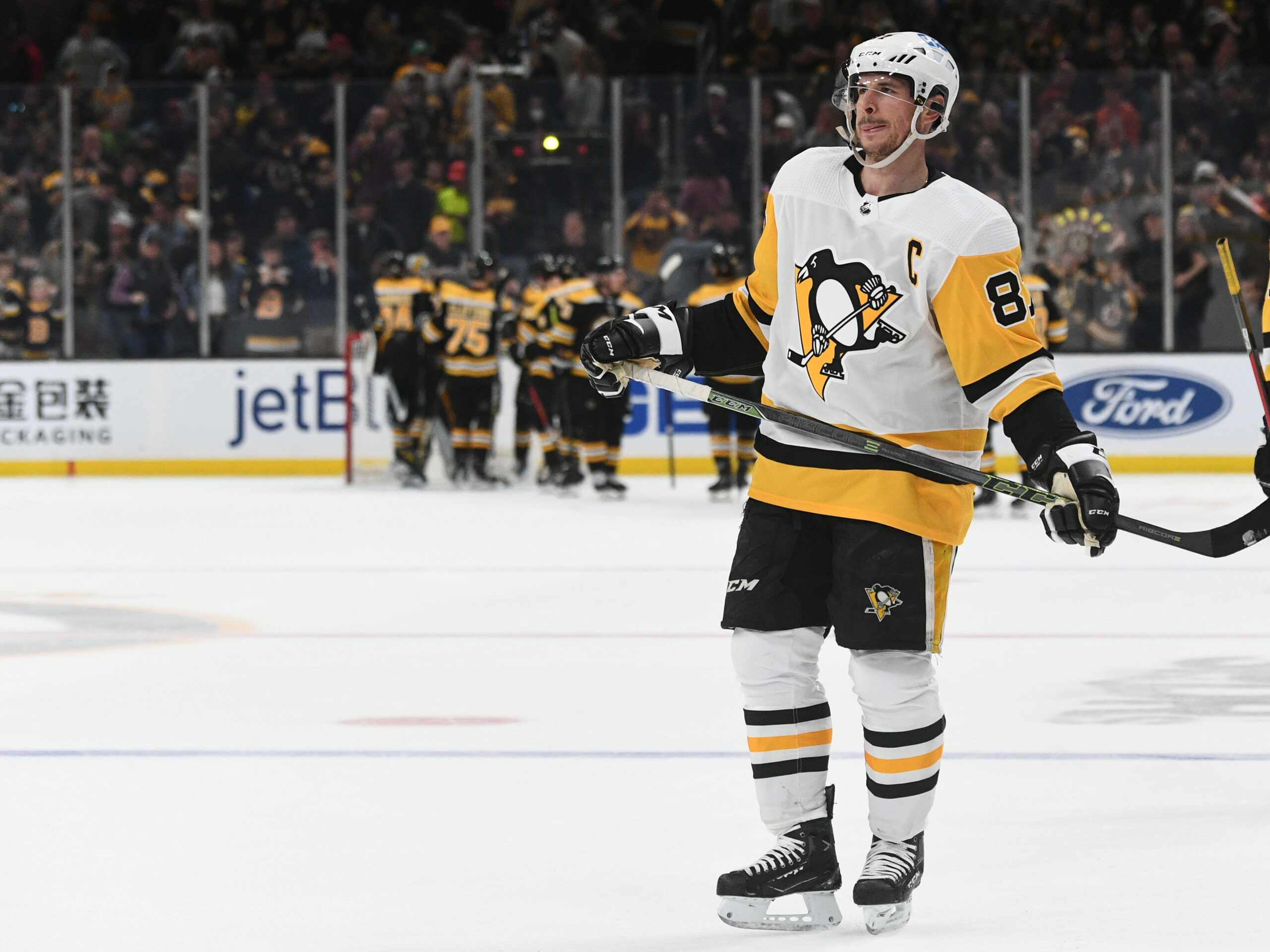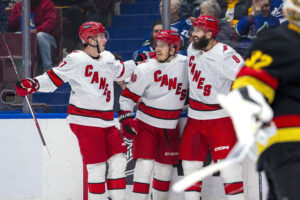The back-half of Ray Shero’s tenure as Penguins General Manager was disappointing. This article analyzes his five worst moves as general manager. Shero’s tenure as Pittsburgh Penguins general manager ran from 2006 to 2014 and was marked with many ups and downs. While Shero made several key moves that helped the Penguins win the Stanley Cup in 2009, his decision-making in the years following the championship win saw the team struggle to maintain its status as a contender. As such, this article looks at the moves that led to Shero’s eventual dismissal.
Shero’s Five Worst Moves as Penguins General Manager
#5. Signing Zybnek Michalek (5 years, $20 million – July 1, 2010)
After a disappointing follow-up season to the 2009 Stanley Cup win, Ray Shero signed defenceman Zbynek Michalek to a five-year, $20 million contract in the summer of 2010. Michalek was known for his defensive reliability and shot-blocking capabilities. These traits were seen as valuable to a team in need of balancing their roster’s offensive and defensive capabilities.
Impact
Although he had high expectations, Michalek never quite lived up to his deal while with the Penguins. His offensive contributions were negligible, only scoring 32 points in 135 games with the team. While his defensive play was steady, it was not enough to justify a $4 million cap hit in a lower salary cap league. Michalek struggled in Pittsburgh’s system, one that favoured more mobile defencemen. He was traded after just two seasons, returning to the Phoenix Coyotes in 2012 for cap reasons. The relatively high average annual value compared to his underwhelming performance made this signing a mistake Shero had to offload just a couple of years in. This kind of hasty decision would signify the quality of moves to come in the back half of Shero’s general manager tenure.
#4. Trading a 2013 First-Round Pick, forwards Kenny Agostino and Ben Hanowski for Jarome Iginla (March 28, 2013)
As the 2013 trade deadline approached, the Pittsburgh Penguins looked like the top team in the league. To take advantage of this opportunity, Shero made a few significant deals to bolster the roster. One such blockbuster move was to acquire future Hall of Famer Jarome Iginla from the Calgary Flames. In exchange, the Penguins sent back their 2013 first-round pick along with Kenny Agostino and Ben Hanowski. At the time the trade was made, it was seen as a home run for a team trying to get Sidney Crosby and the core their second Stanley Cup. However, his performance would not pan out the way the organization expected.
Impact
Despite his incredible talent, Iginla never found his footing in Pittsburgh. A significant issue that occurred was through the coaching of Dan Bylsma. Instead of being used in his natural right-wing position, Iginla was shifted to the left side. This change immediately diminished Iginla’s production, as he struggled to mesh with the Penguins offensive system while playing in an unnatural position. Pittsburgh’s roster was heavily talented and fared well through the first two rounds against the New York Islanders and Ottawa Senators. However, the team was shut down offensively and handily swept by the Boston Bruins in the Eastern Conference Final. Iginla failed to make much of an impact during this series. Adding salt to the wound, Iginla would depart the team in free agency. This meant significant assets were burned on a player who did not have the intended impact on the team.
#3. Signing Rob Scuderi a Second Time (4 years, $13.5 million – July 5, 2013)
In a desperation move rooted in nostalgia rather than logic, Penguins general manager Ray Shero signed defenceman Rob Scuderi to a four-year, $13.5 million deal in 2013. Scuderi had previously played a pivotal role in the Penguins 2009 Stanley Cup victory. As such, the thought process was that bringing a defenceman with a familiar cup winning pedigree would help a roster struggling to get back over the hump. Although Scuderi would bring veteran presence, aging would diminish his playstyle too much to be effective.
Impact
The version of Rob Scuderi that returned to Pittsburgh was far from the player who helped the Penguins in 2009. At 34, Scuderi’s mobility had markedly declined. He had become a defensive liability in an NHL shifting to a focus on speed. Scuderi’s inability to keep up with the Penguins tempo hindered their defence, as he would often get beat by opposing talent in the defensive zone. Additionally, his $3.375 million cap hit made him an expensive blemish on the roster. In 2015, new general manager Jim Rutherford offloaded Scuderi to the Chicago Blackhawks, although he had to retain his salary to move him. Scuderi’s production did not meet expectations while further complicating Pittsburgh’s precarious cap situation. This would prevent the organization from being able to add depth to other parts of the roster during his tenure.
#2. The Douglas Murray Trade (March 25, 2013)
Similarly to the Jarome Iginla move, acquiring Douglas Murray was done to load up the 2013 Penguins roster. The Penguins wanted to add physicality to their blue line ahead of the playoffs. As such, Ray Shero traded two second-round picks to the San Jose Sharks for the rugged defenceman Douglas Murray. He was known for his size and toughness, although his skating immediately was a concern.
Impact
Murray’s time in Pittsburgh was nothing short of a disaster. As Scuderi would later in the same year, Murray struggled to adapt to the Penguins fast, transition-heavy style of play. His lack of mobility was glaring, especially in a rigid coaching system led by Bylsma focused on speed. Murray’s physical presence was overshadowed by his inability to keep up with faster opponents, making him a defensive liability in crucial moments. The Penguins were handily defeated by the Bruins, and Murray was not re-signed after the season. Losing two second-round picks for a rental who didn’t fit the team’s needs makes this one of Shero’s most regrettable trades. Moving out a first and two seconds along with two prospects for the lack of performance given by Jarome Iginla and Douglas Murray was incredibly disheartening to fans.
#1. Not Firing and Replacing Dan Bylsma Sooner (2010-2014)
Although the Penguins struggled in the playoffs after the 2009 Stanley Cup win, the 2013 playoffs were seen as the point of no return for Ray Shero and his head coach Dan Bylsma. After the Penguins disappointing performance in the 2013 playoffs, many believed a coaching change was necessary. Bylsma’s system had grown stale, and the team struggled in high-pressure scenarios. Instead of making a change, Shero opted to retain Bylsma for the 2013-14 season and until both of their firings.
Impact
Shero’s disconnect with head coach Bylsma may have been the most damaging aspect of his tenure. For example, Shero gave up premium assets for Iginla and Murray, and then Dan Bylsma misplayed them. Shero displayed a lack of understanding in his own team’s systems. He then doubled down by bringing in a similar defenceman in Rob Scuderi just months later. These decisions backfired as the Penguins fell short in the 2014 playoffs, losing to the New York Rangers after going up 3-1 in the series. By the time Shero was finally let go following the 2013-14 season, it was clear that the decision to stick with Bylsma had been a mistake. A new coach may have reinvigorated the team’s core but instead, the Penguins stagnated, as Shero’s reluctance to learn from his mistakes cost him his job.
Concluding Ray Shero’s Worst Moves as Penguins General Manager
Ray Shero’s time as the Pittsburgh Penguins general manager saw a mix of success and failure. The decisions in this article highlight some of his biggest missteps. From costly signings and hasty trades to the unwillingness to move on from his coach, these moves hurt the organization’s performance and flexibility for future moves. While Shero’s early years are marked by championship success, his later decisions have left a bad taste in many fans’ mouths. Ultimately, these mistakes contributed to Shero’s firing and set the stage for new direction under Jim Rutherford.
Main Photo Credit: Brian Fluharty-Imagn Images






